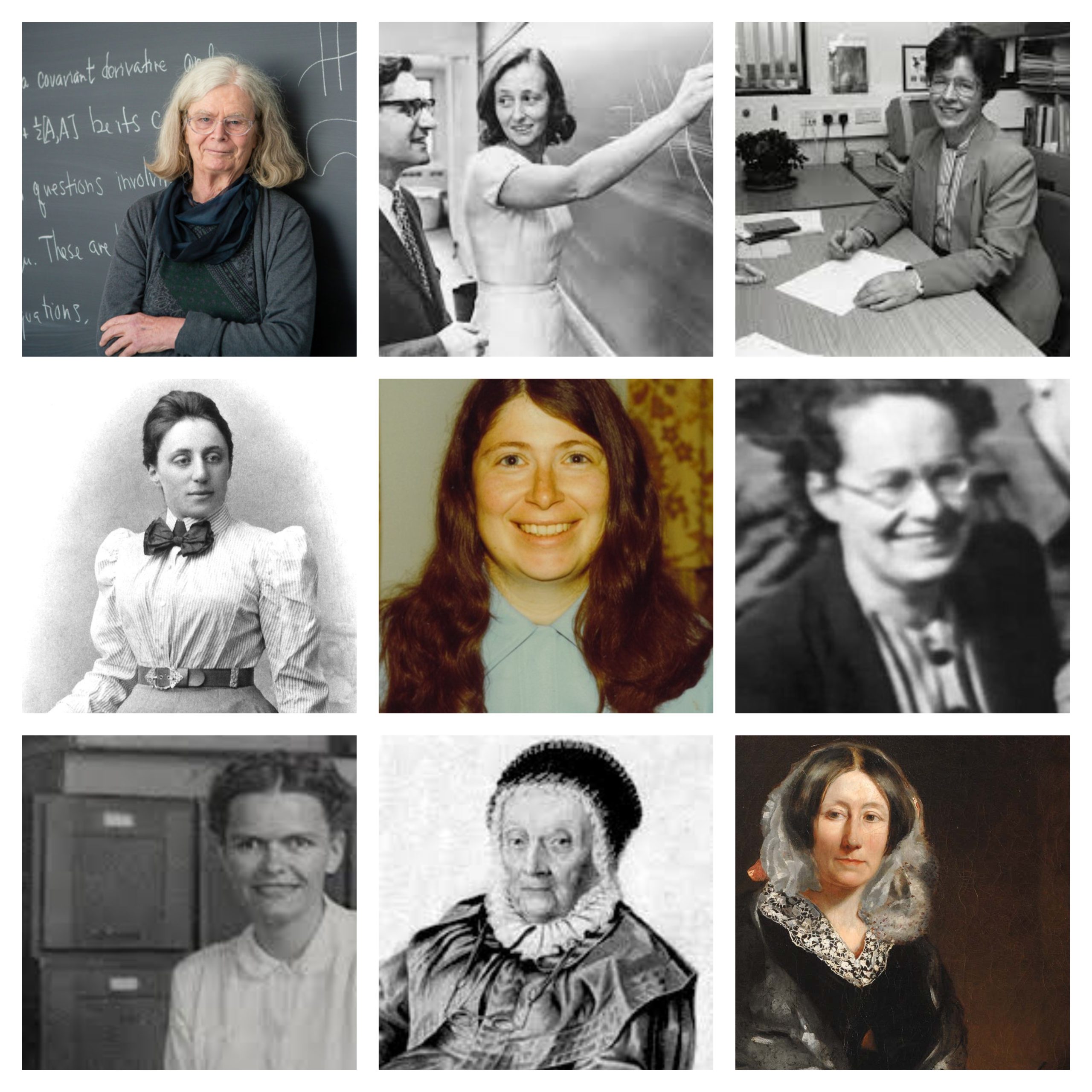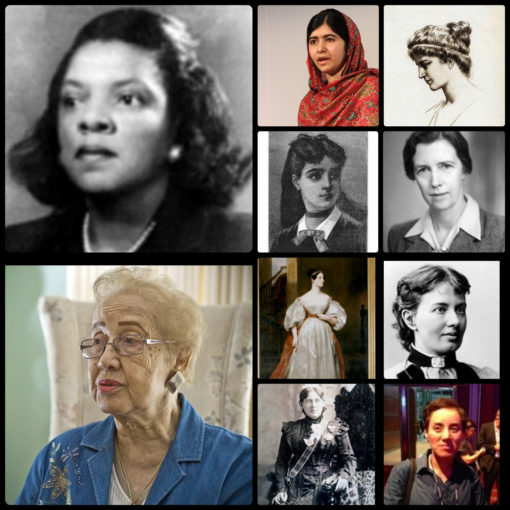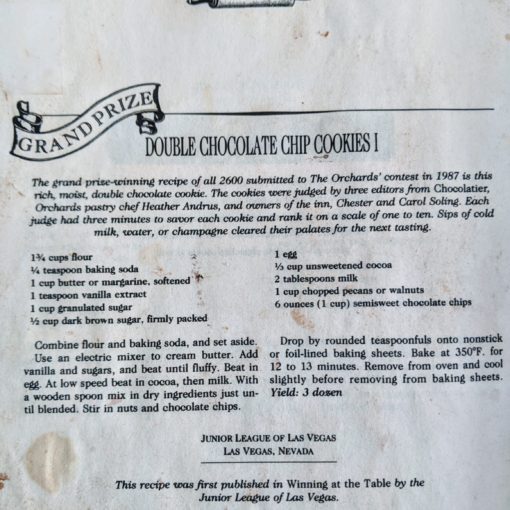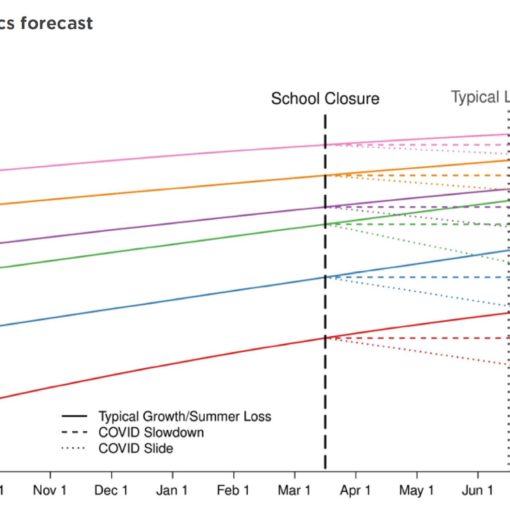
Math and many of the sciences seem to be traditionally male dominated professions. This doesn’t mean that only men have contributed to these fields. Below is a short list of remarkable female mathematicians throughout history. There are many more and please let us know of an equally notable female mathematician we have missed from the list below. We will definitely update our list. Below is a brief introduction to each of these women. While each received many awards and held important positions in the academic and mathematical community, their greatest impact was that they preserved in a predominantly male discipline helping to pave the way for the next generation of female mathematicians. More can be found out about each at the given reference.
Emmy Noether (1882-1935)
This is a name I remember seeing when I was at university but never really took the time find out more about. Emmy Noether was born in Germany. Her father was a mathematician. She wasn’t allowed to official enroll in university so she audited courses, passed the exams and earned her undergraduate degree. When a university would finally accept her, she was able to earn her Phd. However, she wasn’t allowed to hold a teaching position. A year after Einstein published his general theory of relativity, in 1915, Noether was asked by a group of leading mathematicians to help solve a problems with Einstein’s take on gravity. She went on to prove that general relativity doesn’t contradict the established law of conservation of energy. Three years later she proved her own theorem: She proved that every law of conservation (energy, momentum, angular momentum etc.) was bound to an associated symmetry in nature. This tool, Noether’s first theorem, was the foundation for abstract algebra and theoretical physics. It allowed physicists to describe the interactions of weak, strong and electromagnetic forces. Her tool also helps explain the behaviour of black holes and existence of dark matter. [2, 3]
“My methods are really methods of working and thinking; this is why they have crept in everywhere anonymously.” – Emmy Noether [5]
Cathleen Morawetz (1923-2017)
Cathleen Morawetz was a Canadian mathematician and physicist. She was a doctoral student at New York University and mentored by Richard Courant, one of Noether’s mentors. After completing her Phd she spend the rest of her career at NYU. Here she became the first female director of the Courant Institute of Mathematical Sciences. Her best known contributions are her mathematical techniques applied to wave propagation, Morawetz inequality and Morawetz estimate. “She was the first to prove that no aircraft airfoil design could completely eliminate shock waves at supersonic speed.” [3] As a result, engineers could now design wings to minimize shocks rather than trying to eliminate them. This is a direct application of mathematics. Among her many awards and recognitions in her career, she was the first female mathematician to receive the National Medal of Science in 1998. [3]
Karen Uhlenbeck (1942- present)
Karen was the first woman to win the Abel Prize in mathematics in 2019. The Abel prize, from the Norwegian Academy of Science, is said to be the equivalent of the Nobel Prize in mathematics. Karen received her Phd in 1968 from Brandeis University. She made “pioneering contributions to globale analysis and gauge theory” which advanced the fields of mathematical physics and theory of partial differential equations. She taught at MIT, Berkeley and the University of Illinois; she held many senior positions; received many awards, all notable achievements. Another significant and historical moment is in 1990 when she became the second woman, after Emmy Noether in 1932, to give a Plenary Lectures at an International Congress of Mathematics. [3, 14]
Caroline Herschel (1750 – 1848)
Caroline story is interesting. She became ill with typhus when she was a child at 10 years old. As a result she never grew taller than 4’3”. It was assumed she would amount to very little since she was probably never going to marry. Her brother William, an astronomer, discovered the plant Uranus in 1781. Caroline became his paid assistant and made significant discoveries of her own including discovering 7 new comets. She was the first woman to receive the Royal Astronomical Society’s gold medal in 1828. She lived a long life and died at the age of 97. [4]
Joan Clarke (1977-1996)
Joan Clarke worked on the team of cryptanalysts with Alan Turing that created the Enigma machine to break the Nazi codes during wartime. She later became head of the team. Unfortunately, she was always paid less than male counterparts and was never able to progress further in her career because of her sex. There were other women codebreakers at Bletchley, Joan being one of them. Unfortunately, their contributions are hardly noted and a lot of digging is required to even find them. The movie Imitation Game brings the story of Enigma and Alan Turing to people’s attention. Joan Clarke’s role is also featured. The Bletchley Circle TV series, while a dramatization, focuses more on the women of Bletchley. [4, 8, 9]
Dame Jacelyn Bell Burnell (1943-present)
In the late 1960’s she detected the first radio pulsar. This was one of the greatest astronomical discoveries of the century. In 1974 her two male colleagues received a Nobel Prize for the finding, yet her name was second in the list of 5 authors on the winning paper and she was the observe and precisely the analyze the neutron star. She went onto acquire many honors and awards including Commander and Dame of the Order of the British Empire; honorary degrees from many universities among others. A documentary about her life, Northern Star, aired on the BBC in 2007.[4, 13]
Radia Perlman (1951 – present)
“Mother of the internet”, not necessarily her preferred title – She graduated from MIT in early 1970s. She became a leader in computer science. Some of her contributions include creating the Spanning Tree Protocol algorithm that made the internet possible. She was induced into the National Inventor’s Hall of Fame in 2016. There is an interesting article about Radia Perlman, question and answer style, that gives some insight to her experience, life and how she ended up in computer science. [12]
Mary Somerville (1780-1872)
Mary grew in a time and in family where education for woman was not seen as necessary nor encouraged much. What little education she did receive was from her mother and only to read as writing seemed unnecessary for her to learn. She tried to educate herself at home by reading but was not encouraged as it was considered “unlady like”. It was a visit to her uncle and he who encourage her to continue with her education. At the time that consisted of her teaching herself Latin. While visiting her uncle he would practice Latin with her at breakfast. She continued with her self-education including painting lessons from artist Alexander Nasmyth. This is where her interest in mathematics started. Nasmyth’s comment was to another student – Nasmyth was explaining how Euclid’s Elements formed the basis for understanding perspective in drawing among other things such as astronomy, science and more. This started her self study of Euclid’s elements. Mary’s first husband was not encouraging of her sex let alone her educating herself. It wasn’t until his death that she was able to learn more about mathematics and sciences encouraged by people like John Playfair (philosopher) and William Wallace. It wasn’t until her second husband, William Somerville, that she had more freedom and encouragement to learn sciences and mathematics. She met and corresponded with many scientists and mathematicians including Laplace and Chales Babbage. It wasn’t until 1827 when Mary was asked to translate a book by the mathematician Laplace that her work gained notice and success. She continued her work and contribution to mathematics; was given numerous honours; Somerville college at Oxford University was named after her. [6,11]
Julia Robinson (1919-1985)
Julia seemed to display a talent for learning completing grades 5-8 in one year. Her dedication to mathematics started in college. She contributed to many areas of mathematics including decision problems, game theory and statistics. She spent decades working on Hibert’s tenth problem [10] coming to a solution in 1980.
“I like to think of mathematicians as forming a nation of our own without distinctions of geographical origin, race, creed, sex, age or even time.. all dedicated to the most beautiful of the arts and sciences.” [5, 15]
References
- 9 Famous Female Mathematicians Who have changed the world & What we can Learn from them, Ellie Williams, April 2020, Third Space Learning, URL: https://thirdspacelearning.com/blog/famous-female-mathematicians/
- Five Historic Female Mathematicians you should know, Sarah Zielinski, Oct 2011, Smithsonian, URL: https://www.smithsonianmag.com/science-nature/five-historic-female-mathematicians-you-should-know-100731927/?page=1
- 5 Trailblazing Female Mathematicians, Dave Roos, March 2019, how stuff works, URL: https://science.howstuffworks.com/math-concepts/5-trailblazing-female-mathematicians.htm
- 10 Female mathematicians who changed the world, Feb 2017, Kerry Kolbe, The Telegraph, URL: https://www.telegraph.co.uk/films/hidden-figures/female-mathematicians-who-changed-the-world/
- 10 Famous Women Mathematicians, March 2019, AU Online, Aurora University, URL: https://online.aurora.edu/infographics/10-famous-women-mathematicians/
- Five Famous female Mathematicians, maths careers, URL: https://www.mathscareers.org.uk/article/five-famous-female-mathematicians/
- Chronological Index of Women Mathematicians, Agnes Scott College, URL: https://www.agnesscott.edu/lriddle/women/chronol.htm
- Joan Clarke, woman who cracked Enigma cyphers with Alan Turing, Joe Miller, November 2014, BBC.com, URL: https://www.bbc.com/news/technology-29840653
- Joan Clarke, School History, URL: https://schoolhistory.co.uk/notes/joan-clarke/
- Hilbert’s tenth problem, Wikipedia, URL: https://en.wikipedia.org/wiki/Hilbert%27s_tenth_problem
- Mary Fairfax Greig Somervile, Mathshistory.st-andrews.ac.uk, URL: http://mathshistory.st-andrews.ac.uk/Biographies/Somerville.html
- Radia Perlman: Don’t call me the mother of the Internet, Rebecca J. Rosen, March 2014, The Atlantic, URL: https://www.theatlantic.com/technology/archive/2014/03/radia-perlman-dont-call-me-the-mother-of-the-internet/284146/
- Jocelyn Bell Burnell, Biography, April 2014, Updated Mar 13, URL: https://www.biography.com/scientist/jocelyn-bell-burnell
- Karen Uhlenbeck, Biographies of Women Mathematicians, Agnes Scott College, URL: https://www.agnesscott.edu/lriddle/women/uhlenbk.htm
- How Julia Robinson helped define the limits of mathematical knowledge, Evelyn Lamb, Nov 2019, Science News, URL: https://www.sciencenews.org/article/how-julia-robinson-helped-define-limits-mathematical-knowledge
 Math and many of the sciences seem to be traditionally male dominated professions. This doesn’t mean that only men have contributed to these fields. Below is a short list of remarkable female mathematicians throughout history. There are many more and please let us know of an equally notable female mathematician we have missed from the list below. We will definitely update our list. Below is a brief introduction to each of these women. While each received many awards and held important positions in the academic and mathematical community, their greatest impact was that they preserved in a predominantly male discipline helping to pave the way for the next generation of female mathematicians. More can be found out about each at the given reference.
Math and many of the sciences seem to be traditionally male dominated professions. This doesn’t mean that only men have contributed to these fields. Below is a short list of remarkable female mathematicians throughout history. There are many more and please let us know of an equally notable female mathematician we have missed from the list below. We will definitely update our list. Below is a brief introduction to each of these women. While each received many awards and held important positions in the academic and mathematical community, their greatest impact was that they preserved in a predominantly male discipline helping to pave the way for the next generation of female mathematicians. More can be found out about each at the given reference.




